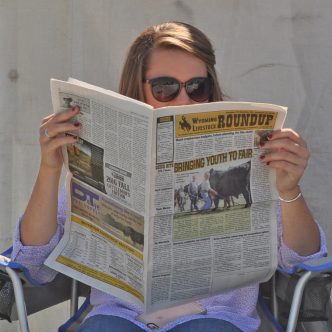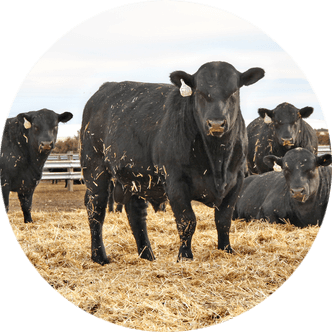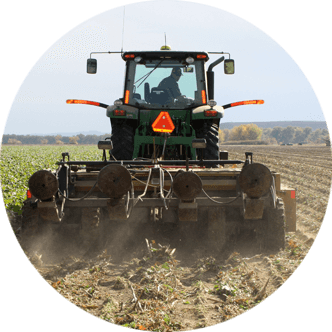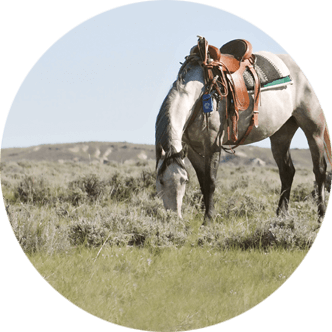Converse County project explores benefits of wool in gardening
In recent years, much attention has been paid to the potential benefits of using raw wool as a soil additive in gardening.
A Converse County Extension project is adding to recent research exploring these benefits.
Converse County Extension Educator Jedidiah Hewlett and Master Gardener Coordinator Becky Harris are overseeing a research project which examines the benefits of raw wool as a soil amendment in raised garden beds.
The project is housed in the geodesic domes at the Wyoming State Fairgrounds in Douglas. Research started in July and is expected to continue through the fall season.
Benefits of wool in gardening
Several recent studies have pointed to raw wool as a natural enhancement for gardening. Wool can be used as a mulch to retain moisture, suppress weeds, insulate soil and deter pests.
South Dakota State University Extension Sheep Field Specialist Jaelyn Whaley outlines several benefits of using raw wool in gardening in a June 2024 article titled “Wool: A Natural Bio-Enhancement for Gardens.”
Whaley notes this renewable, natural fiber can be incorporated into soil either in the form of wool fleece or wool pellets.
Wool pellets are often used in gardening as slow-release, natural fertilizer which provides nitrogen and micronutrients, while fleece has been an effective soil amendment to improve water retention and aeration.
Hewlett has conducted research using both pellets and raw fleece. He echoes many of Whaley’s points, emphasizing research findings which indicate improved soil aeration, increased water retention rates and heightened nitrogen and carbon levels, ultimately improving soil quality over an extended period of time.
“Another benefit that is talked about a lot is the nutrient component of wool,” Hewlett says.
“It’s primarily a lot of protein, which breaks down into nitrogen for plant use. The breakdown process can take longer than a year so it’s not necessarily an immediate fertilizer benefit, but the carbon and nitrogen components definitely benefit the soil long term,” he continues.
Research background
Hewlett notes his involvement with research on wool in gardening began in 2024 when the Converse County Extension Office received bags of wool pellets from Cottonwood Creek Wool in Crowheart.
Wool pellets are a waste product and would otherwise end up in landfills, so the incorporation of wool pellets into gardening can provide benefits for sheep producers, the environment and gardeners alike.
“Wool has caught some attention within the gardening space because it can retain up to 30 percent of its own weight in water,” Hewlett says.
He further notes, given the current market conditions, wool producers have been looking for alternative uses for wool – especially poor-quality waste wool – trying to find ways to use it beneficially and prevent it from going to the landfill.
In the 2024 project, Hewlett recalls pellets were mixed into a garden bed as mulch and simply observed without much official recordkeeping or sophisticated research methods.
“We didn’t do anything to specifically measure water retention, but rather just observed what the pellets did,” Hewlett says. “It was a learning process.”
Even without official measuring, the water-retention qualities of wool were apparent from Hewlett’s observations.
“Because wool in the pellets is unwashed, they tend to be a little hydrophobic at first,” Hewlett remarks. “But once they start to saturate and plump up, it’s fascinating to watch.”
Observations from the pellet project have led to the current iteration of research overseen by Hewlett and Harris which involves monitoring the benefits of raw wool as a soil amendment in a raised garden bed.
Current project
Current research got underway in July following a donation of fleece by the local Jackalope City Spinners fiber arts group.
Raised beds for the geodomes and soil water sensors were purchased with grant money from the local Converse County Conservation District. Plants were donated by the local hardware store, and other planting materials, including soil and tree mulch, were sourced locally as well.
According to Hewlett, the raised bed is six-feet long by two-feet wide and three-feet high. The plot contains a mixture of shredded tree bark from the local landfill topped with a standard commercial potting soil mix.
One-half of the split plot contains the soil and bark mixture, while the other half contains roughly 10 pounds of wool fleece mixed into the top six inches of soil. A combination of eggplant, celery, cabbage and kale were planted on both sides of the split plot.
Water is applied to both sides in order to remain standardized. Surface growth is monitored consistently, in addition to soil saturation which is observed via soil water sensors.
“When the soil is fully saturated, there’s no pull on the sensor itself,” Hewlett remarks. “From what we’ve been seeing, the wool side is definitely staying saturated longer than the side without wool.”
As research is still ongoing, conclusive findings are not yet finalized, but preliminary findings do indicate wool is a beneficial garden additive, especially when it comes to improving water retention.
Hewlett expects the plants to be able to grow through October but emphasizes weather conditions like frost could impact the timeline. He also notes the likelihood of continued wool research projects in the future, with the raised garden bed plot dedicated to more experiments next growing season.
Grace Skavdahl is the editor of the Wyoming Livestock Roundup. Send comments on this article to roundup@wylr.net.





